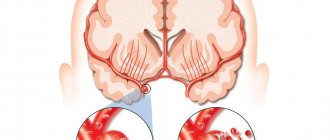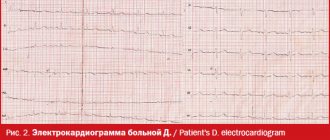Magnesium is the main anti-stress macronutrient!
Murzaeva Irina Yurievna
Endocrinologist, Preventive Medicine Doctor
March 13, 2018
Not so long ago, I began to get involved in the problems of violations of the most important micro (macro) elements in the human body , and it all started with a search for the causes of autoimmune thyroiditis and the reasons for its prevalence, with a textbook on micro element violations in AIT, then the topic began to expand in search of the causes of “massive hair loss ", including in children, searching for the causes of frequent acute respiratory viral infections in children... more to come. It turned out that the violation of the microelement composition of the human body is a huge science and more than one Russian scientist is engaged in this, but this topic is poorly covered and there is little literature where you can familiarize yourself with it:!: But whoever searches will always find.
Today we start talking about the most important microelements and macroelements for humans.
Magnesium is a mineral that is now actively discussed and advertised ... “magnesium for stress”, “magnesium for irritability”, “magnesium for arimagnesium for seizures” “magnesium for uterine hypertonicity during pregnancy”, etc. MagneB6 and Magnelis are perhaps the most famous magnesium preparations. But this is just the tip of the iceberg, magnesium is not so simple...)
Magnesium is involved in more than 300 enzymatic processes in the body; magnesium, along with sodium and potassium, is a vital macroelement (not even a microelement  ).
).
There is only 24 grams of magnesium in the body (this is not much), but without it, it is not possible to conduct a nerve impulse along nerve fibers, or contract the heart, or contract muscles, or regulate blood pressure; without it, blood coagulation is disrupted, appetite is disrupted, there can be nausea and vomiting and other disorders. A separate book has been written about magnesium; it is a serious scientific work, 800 pages long, entitled “Magnesium and the Diseases of Civilization.” In this article I will not cover all the most important “points of application” of magnesium in the body, sometime later, I’d rather talk about its practical application...
Magnesium is a mineral that is difficult to “accumulate” in the body, it is consumed extremely quickly, and the more stress, the more pronounced the magnesium deficiency... But not all magnesium preparations can successfully replenish its deficiency.... For its absorption and for the best effect in a given situation, it is important to understand what magnesium is “connected” with. I’ll explain in more detail... In order to enter the body, magnesium must be “in the composition” of salt or some organic compound, and the effect of magnesium and digestibility will depend on the nature of “this conductor - salt or organic matter”.
Now about magnesium absorption: Magnesium can exist in the following 15 forms −
magnesium citrate, magnesium malate, magnesium glycinate and bisglycinate, magnesium threonate, magnesium carbonate, magnesium lactate, magnesium taurate, magnesium chloride, magnesium orotate. magnesium sulfate, magnesium chelate, magnesium oxide, glutamate and magnesium aspartate.
And now I’ll decipher:
Magnesium citrate is a magnesium salt of citric acid, the most digestible form of magnesium, used in most well-known drugs - MagneB6 and Magnelis, magnesium citrate solgar, etc., is used more often as an antispasmodic, relieves spasms of the gastrointestinal tract, that is, relieves constipation and impaired bile secretion, good in gastroenterology.
Magnesium malate is a magnesium salt of malic acid that relieves hypomagnesium muscle cramps, relieves fatigue and aluminum intoxication in the body.
Magnesium threonate - in combination with threonic acid, in studies improves long-term and short-term memory, better than magnesium citrate
Magnesium taurate is a non-toxic form of magnesium, very bioavailable, good to use for insulin and leptin resistance, that is, it reduces cravings for overeating sweets and “night gluttons.”
Magnesium oxide - can only be used in cases of reducing high stomach acidity; in other cases it causes severe osmotic diarrhea. Therefore, it is good for constipation.
Magnesium chloride - used primarily as bath salts with a calming effect on the nervous system, but more on that later.
Magnesium orotate is a compound of magnesium with orotic acid, has a predominant effect on the heart muscle, is used for rhythm disturbances and congenital heart disease such as mitral valve prolapse.
Magnesium sulfate - combined with sulfuric acid, used in bath salts (in this form it is practically irreplaceable), in “famous” intravenous injections, mainly to relieve hypertensive crises.
Magnesium aspartate and glutamate - it is better not to use, they belong to the class of endotoxins.
Magnesium glycinate and bisglycinate are a good form of magnesium, mixed with glycine, good for chronic fatigue syndrome and pelvic pain, good because it does not cause a laxative effect.
Magnesium lactate is an artificially synthesized, inexpensive form of magnesium, has a general strengthening effect, as an excipient it is used in most magnesium preparations as an integral part.
Magnesium carbonate - also used for increased stomach acidity, neutralizes the effect of NSAIDs, good for GERD, not for phenylketonuria.
Magnesium chelate is a form of magnesium immersed in an amino acid, facilitating bioavailability. The absorption of the chelate and, accordingly, magnesium from it is 90% , it does not change the acidity of the stomach, unlike forms combined with acids - therefore it is suitable for everyone, but accordingly it is less effective for constipation and other gastrointestinal dyskinesias, but is rarely found in retail sales and is expensive form of magnesium.
Magnesium is in close relationship with calcium, vitamins K2 and D3. The balance of these four elements will help maintain health without complications.
Only for thyroid function, magnesium has a less significant effect than selenium, iodine and iron, for example.
Now about my favorite form of magnesium...... If you don’t want to swallow pills, you don’t need a laxative effect, and your nerves are “on edge and you can’t sleep,” it wouldn’t be a bad idea to carry out an Anti-Stress or Detoxification program—your ideal option—English baths salt, or, simply put, baths with magnesium sulfate 0.5-1 kg of salt per 1 bath and within the first 15 minutes “you will start to fall asleep in the bath.”
Below are questionnaires by which you can determine magnesium deficiency in an adult and a child.
The first signs and consequences of magnesium deficiency
Magnesium is responsible for relaxing muscle cells. When there is not enough of it, the cell contracts and is unable to fully relax. The counterbalance of magnesium is calcium, which accumulates in the cell at this time.
This results in increased blood pressure, coronary spasm, heart rhythm disturbances, muscle cramps, arterial calcification and thrombus formation, spasms of blood vessels and organ walls (bronchial asthma, etc.).
Magnesium prevents the increase in uterine tone during pregnancy.
When it decreases, there is a risk of miscarriage, premature birth, fetal hypoxia and subsequent delay in the child’s development.
Magnesium promotes the intrauterine formation of bone and connective tissue in the fetus.
With persistent deficiency there is a risk of congenital malformations
Magnesium removes excess calcium from the kidneys. When there is a lack of calcium, calcium begins to accumulate in the kidneys.
Hence the formation of stones. When calcium combines with uric, phosphoric and oxalic acids, urate, phosphate, and oxalate salts are formed. From them stones are formed.
When there is a deficiency of magnesium, it is released from its reserves - from the bones, disrupting their chemical composition and stability.
Indirect destruction of bones and teeth begins.
Magnesium is part of an enzyme that lowers cholesterol and triglycerides. This means it participates in fat metabolism. When there is a deficiency, cholesterol plaques form.
This is where atherosclerosis occurs. Due to atherosclerotic plaques in the vessels, the lumen narrows and blood circulation is impaired. And in the long term - coronary heart disease, angina pectoris, cerebral ischemia with a further risk of developing a heart attack or stroke.
Promotes the production of insulin and its transport to cells
When Mg decreases, the concentration of glucose in the blood increases and diabetes mellitus may occur.
Responsible for the synthesis of antibodies (immunoglobulins)
If there is a deficiency - a decrease in the body's immune response to viral and bacterial agents
Participates in energy metabolism in the cell
When it decreases, there is causeless fatigue, even after sleep. Also lack of strength
Participates in the transmission of nerve impulses
With a decrease, neuromuscular excitability increases with the appearance of irritability, depression, migraines, sleep disturbances, insomnia, and nightmares.
Magnesium is also involved in protein synthesis and mineral metabolism, regulates the production of hormones, the activity of the genitourinary system, and normalizes kidney function.
And further:
The main causes of potassium and magnesium deficiency:
increased sweating (sports, hot climate, work in hot shops, frequent visits to baths or saunas)
diarrhea or use of laxatives
use of diuretics (except potassium-sparing ones)
hormonal treatment, including contraception
diabetes
diseases of the gastrointestinal tract (gastritis, ulcers, diseases of the gallbladder and pancreas)
chronic stress and depression
regular consumption of coffee and/or alcohol
cardiovascular diseases
Transdermal magnesium
Despite all the efforts of manufacturers, the bioavailability of magnesium from dietary supplements remains quite low. Hence the idea of delivering it to the body in other ways. For example, through the skin.
Creams and sprays
And also gels, soaps, oils and lotions, mainly with magnesium chloride (it has the second highest concentration of magnesium after oxide - 30%). American naturopath Norman Shealy was the first to speak about their effectiveness. In 2005, he published a comparison table that showed that by rubbing magnesium cream into the skin, you can correct the deficiency much faster than using nutritional supplements (in a month and a half, rather than in six months). It is this research that is usually meant when it is repeated like a mantra that magnesium is absorbed better through the skin. The problem is that there is no study - only a short abstract with conclusions is available. But several screening tests with animals and people did not confirm them. Apparently, the author rubbed in not only magnesium. So a large review of current research on this topic does not recommend transdermal use.
Magnesium baths
This practice dates back to the 18th century, when a resort with unusual mineral water opened in the English town of Epsom - a natural solution of Epsom salts (magnesium sulfate). Now this mixture is credited with various healing properties: it helps to relax and lose weight, relieves pain, and among the most toxic, it “removes toxins.” But initially it was believed that it simply had a laxative effect, which is closer to the truth: taking capsules or tablets with magnesium sulfate sometimes causes diarrhea.
The only study on the effects of magnesium baths was conducted in England, involving 19 students at the University of Birmingham. They lay in a solution of magnesium sulfate (1 g/100 ml) for 12 minutes a day at temperatures up to 55 degrees. At the end of the study, the majority of subjects had increased magnesium concentrations in their blood, although only slightly. This did not affect their health in any way. But questions remain.
Magnesium molecules are small enough to penetrate the skin barrier. Magnesium ions labeled with fluorescent markers actually penetrate into the top layer of the skin, using the openings of the hair follicles as a loophole. But for the cellular absorption of magnesium, special transport channels are needed, and they are not present in the skin. How could magnesium get into the blood of students? There are several assumptions. The first is boring, but the most plausible: through the lungs with steam. The second is much more fun: thanks to the absorption of magnesium ions by the mucous membrane of the anus. In the same way, the body could absorb alcohol from a hot bath. But, as Paul Ingram rightly notes, if you really want to take magnesium (or alcohol), then it’s more pleasant and easier to do it by mouth.








